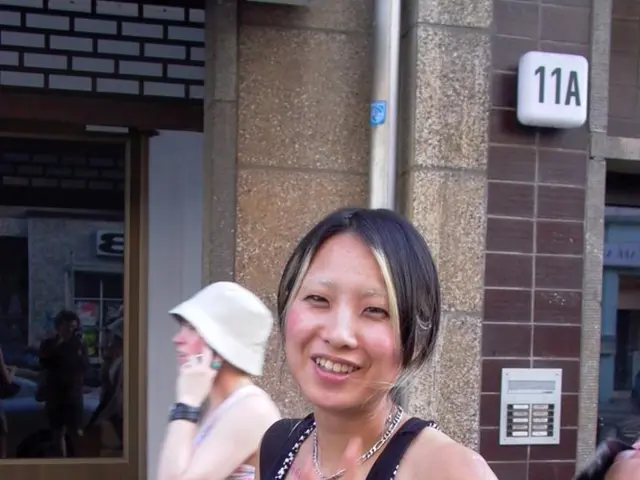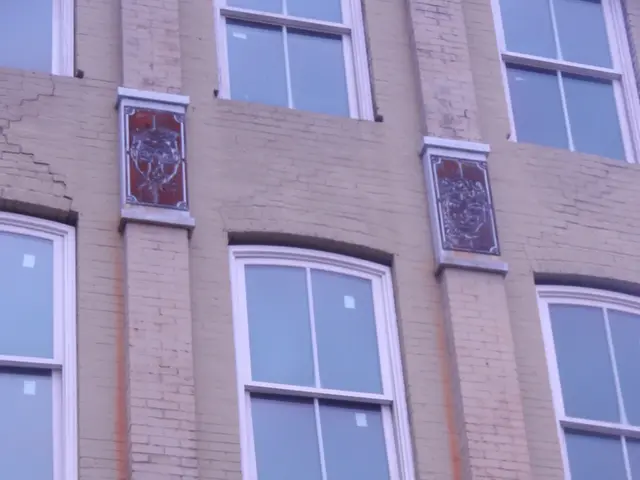Twelve historical structures worldwide, including tombs, temples, and stones, that align with the Sun during the solstice.
The Longest Days: A Global Journey Through Ancient Monuments Aligned with the Solstices
Ah, the solstices! Those glorious occasions when the Sun stands still, bestowing upon us the longest days of the year. In the Northern Hemisphere, June 20-21 holds sway, while December 21-22 reigns supreme in the Southern Hemisphere. These days mark the Sun's farthest trek from the equator, promising a veritable feast of sunlight and heat, heralding astronomical summer.
Here's a lowdown on 12 magnificent ancient locales across both hemispheres that synchronize with the solstices, each holding a unique tale of yore and cultural significance. Some you may have heard of, others not so much, but all of them offering a peek into humanity's ancient romance with the Sun and the heavens.
1 - Stonehenge, Wiltshire, UK
Let's kick things off with the world-famous Stonehenge in merry old England. This circle of stones seems to align with the rising Sun on the summer solstice, leaving many historians, archaeologists, and enthusiasts scratching their heads. Has the Sun flirted with this curious arrangement for millennia, or is it all just a cosmic coincidence? You decide! Every year, around 8,000 folks attend the solstice sunrise, while the more homebound among us can enjoy the magic online through English Heritage's livestream.
2 - Chaco Canyon, New Mexico, USA
Now hop on over to New Mexico, where lies Chaco Culture National Historical Park. This hub of the ancestral Puebloan culture dates back a cool 1,000 years and features a smorgasbord of cliff dwellings, multi-story buildings, and kivas. Casa Rinconada, a nifty sunken circular 'great house,' aligns with the cardinal directions, while Fajada Butte boasts a rock emblazoned with dagger-shaped beams of sunlight that dance in a spiral during the solstice.
3 - Ballochroy, Kintyre, UK
Take a wee detour up north to Ballochroy, a megalithic observatory site that places bets on whether the solstice sun sets behind the mountain of Jura on the isle of the same name. Some scholars think this could have been an early, though controversial, attempt at determining the solstice date, while others contest the theory, citing a cairn that would have obstructed the alignment. Regardless, watching the Sun set behind Jura in mid-to-late June is nothing short of breathtaking from this quaint megalithic monument.
4 - Hovenweep National Monument, Utah, USA
Next up is Hovenweep National Monument, nestled in the southeastern corner of Utah only a stone's throw from the Colorado border. This International Dark Sky Park houses the well-preserved 13th-century Hovenweep Castle. Inside a room, the Sun's rays pierce a small opening and illuminate a specific spot on the back wall every morning, effectively tracing out a solar calendar. At a more remote site called Holly House, two concentric-circle petroglyphs get pierced by beams of sunlight during the summer solstice.
5 - Bighorn Medicine Wheel, Wyoming, USA
Medicine wheels consist of two concentric circles of stones with lines radiating from the center, often aligned with the cardinal points. Found in both the USA and Canada, the most well-preserved example lies in Wyoming: the Bighorn Medicine Wheel. Estimated to be between a few hundred and 3,000 years old, this magical structure marks the summer solstice sunrise between two cairns and the sunset behind the inner cairn.
6 - La Table des Marchands, Carnac, France
France's Carnac stones, scattered across an area in northwestern Brittany, boast over 3,000 stone arrangements dating back to 4500 BC. Among them lies La Table des Marchands, a passage tomb with an enormous 40-ton capstone. The tomb's passage is aligned with the solstice, casting a sandstone endstone in sunlight during the summer solstice. The site's entrance fee and opening hours can be a bit variable, but it's well worth the visit!
7 - Piedras Blancas, Antequera, Spain
Just discovered in 2023, Piedras Blancas is a 5,000-year-old, underground rectangular megalithic tomb carved into the bedrock. The tomb's slabs appear to have been arranged deliberately to illuminate engraved walls within the chamber during the solstice. Not far from this site lies the famous Dolmen of Menga, one of Europe's largest and oldest megalithic structures.
8 - Casa Grande Ruins National Monument, Arizona, USA
Casa Grande, meaning 'great house,' is a four-storey mud building from around AD 1350. During the summer solstice, the setting Sun illuminates a circular hole in the upstairs west wall, while twin openings in the building align with the rising Sun during the spring and autumn equinoxes. This leads some to believe that Casa Grande served as an astronomical observatory, though others think it might have been a ceremonial site.
9 - Pyramids of Giza, Egypt
Whilst it's well-known that the Great Pyramid of Giza aligns with the cardinal directions with impressive accuracy, its alignment with the solstice is noteworthy too. On the winter solstice, the Sun rises over the northern entrance, while the Great Sphinx appears to gaze towards the setting Sun on the horizon during the summer solstice.
10 - Angkor Wat, Cambodia
Angkor Wat, the most renowned Hindu-Buddhist temple complex, seemingly pays homage to the solstices with its orientations. During the spring equinox, crowds gather at the temple to witness the sunrise over the central tower. Conversely, the summer solstice sunrise illuminates a stone altar within the Temple of the Sun thanks to a northeast-facing window.
11 - Machu Picchu, Peru
Machu Picchu, a sacred site constructed around AD 1450 and abandoned within a century, is believed to have been built to pay homage to Inti, the sun god. Academics hypothesize that several solstice alignment theories may have played a part in the site's design. During the winter solstice, a stone altar within the Temple of the Sun gets illuminated by sunlight, raising questions about its function as an astronomical observatory.
12 - Chichen Itza, Mexico
Chichen Itza, one of the largest Mayan cities from AD 600 to 1200, is 105km east of the city of Mérida. At its center lies the impressive nine-storey Kukulcán pyramid, also known as El Castillo. The pyramid's staircases, each with 91 steps (including the top), plus the nine platforms represent the 365 days in the Mayan calendar. During the equinoxes, a fascinating phenomenon known as the 'descent of Kukulcán' occurs when sunlight creates a serpent-like shadow on the pyramid.
So, which solstice-aligned ancient sites leave you awestruck, and have you captured any remarkable images of these cosmic celebrations? Do share your stories and photos with us at contactus@our website.
Stay stargazing, folks!
This guide was originally published in the June 2024 issue of our website.
[1] N. Oliveira, D. Vondraček, and J. Saavedra-López (2020) Solstice alignments at archaeological sites in East Asia, Archaeological and Anthropological Sciences, 12(1)
[2] J. F. Román-Whalen and S. D. Sharer (2009) Chichen Itza: Ancient Maya City and Tourist Destination, Latin American Antiquity, 20(3), 255-272
[3] J. H. Michalmann (2011) Solar alignments in prehistoric Crete: a method to assess prehistoric observatory sites, Journal of Archaeological Science, 38(2), 506-515
[4] D. O'Byrne (2019) Machu Picchu: Sacred City in the Clouds, Psychedelic Press, London, England
[5] A. Carreras, L. Muñoz, and P. Palao (2018) A New Theory about the Construction of the Kasta Tomb in Crete, Mediterranean Archaeology and Archaeometry, 19(1), 5-22.
- Stargazing and climate-change awareness can go hand in hand, as the ancient sites aligned with the solstices often offer a unique perspective on environmental-science and and lifestyle, encouraging travelers to respect the environment while exploring these historical wonders.
- In addition to representations of the solstices, many of these ancient sites, such as Stonehenge, Chichen Itza, and Machu Picchu, also show evidence of astronomy and math, signifying a deeper understanding of science that transcended their times.
- As launching pads for scientific exploration and human connection with the environment and the heavens, these solstice-aligned sites will continue to inspire scientific curiosity and awe for generations to come, fostering a lifestyle that promotes both travel and appreciation for the natural world.




